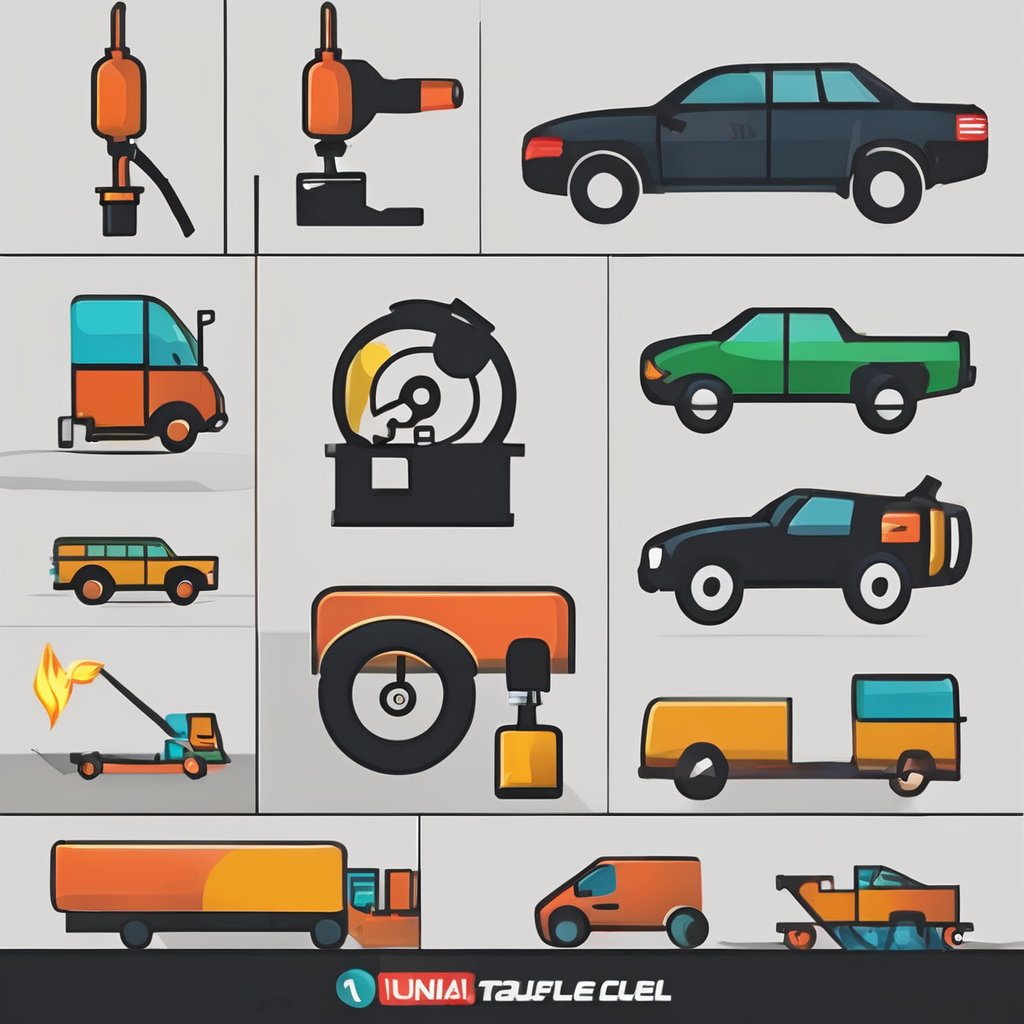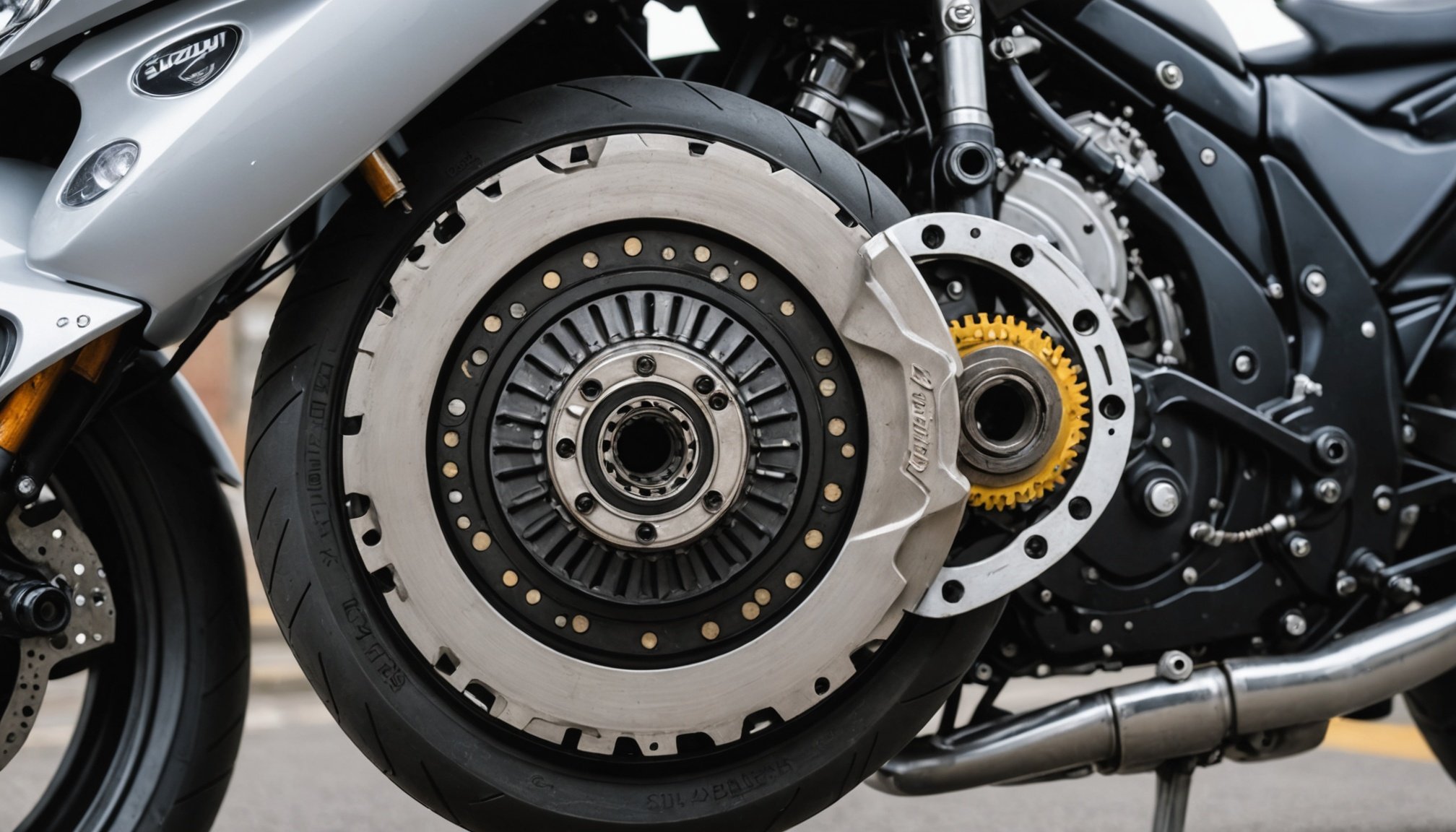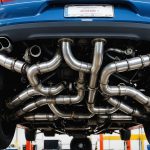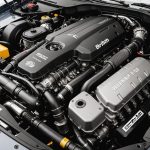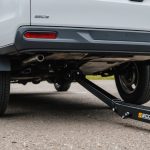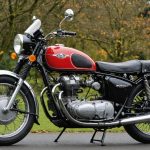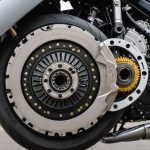Ultimate Guide to Detecting and Replacing Clutch Plate Wear on Your Suzuki Hayabusa: Essential Maintenance Tips You Need!
Understanding the Importance of Clutch Maintenance
When it comes to maintaining your Suzuki Hayabusa, one of the most critical components to focus on is the clutch. The clutch is a vital part of your motorcycle’s transmission system, enabling smooth gear shifts and ensuring optimal power delivery from the engine to the rear wheel. Here’s why clutch maintenance is crucial:
- Performance and Power: A well-maintained clutch ensures that your Hayabusa delivers its full power torque, making every ride exhilarating and efficient. Any wear or damage to the clutch plates can significantly reduce your bike’s performance[1].
- Rider Safety: A faulty clutch can lead to unpredictable gear shifts, which can be dangerous, especially at high speeds. Ensuring your clutch is in good condition is essential for rider safety.
- Engine Longevity: The clutch works in tandem with your engine, and any issues here can put additional stress on the engine, potentially reducing its lifespan.
Identifying Clutch Plate Wear
Detecting clutch plate wear early on is key to preventing more serious problems down the line. Here are some signs to look out for:
In the same genre : Comprehensive step-by-step guide to performing a compression test on your honda cbr600rr for optimal engine health evaluation
Symptoms of Clutch Plate Wear
- Slipping or Chattering: If the clutch slips or chatters when you shift gears, it could indicate worn-out friction plates.
- Difficulty Shifting Gears: If you find it hard to shift gears smoothly, or if the gear shifts are not engaging properly, it might be due to worn clutch plates.
- Clutch Lever Feel: A clutch lever that feels spongy or requires more effort than usual to pull in can be a sign of worn clutch plates.
- Burning Smell: A burning smell when shifting gears can indicate overheated clutch plates.
Visual Inspection
- Check the Clutch Plates: Remove the clutch cover to inspect the clutch plates. Look for signs of wear, such as scoring, warping, or excessive wear on the friction surfaces.
- Clutch Basket and Hub: Inspect the clutch basket and hub for any signs of wear or damage.
Preparing for Clutch Plate Replacement
Before you start the replacement process, here are some steps to prepare:
Gather Necessary Tools and Parts
- New Clutch Plates: Ensure you have the correct type and number of clutch plates for your Suzuki Hayabusa.
- Clutch Cover Gasket: A new gasket is essential to prevent leaks.
- Clutch Cable: If your clutch cable is old or damaged, consider replacing it as well.
- Tools: You will need a socket set, a torque wrench, and possibly a clutch alignment tool.
Drain the Engine Oil
- It is recommended to drain the engine oil to prevent any spills during the process. Refer to your Hayabusa’s service manual for the correct procedure[2].
Step-by-Step Guide to Replacing Clutch Plates
Replacing the clutch plates on your Suzuki Hayabusa is a detailed process, but with the right tools and knowledge, it can be done effectively.
In the same genre : Ultimate handbook: expert tips for safely lubricating steering bearings on your triumph thruxton r
Remove the Clutch Cover
- Use a socket to remove the bolts holding the clutch cover in place. Be careful not to spill any oil that may still be inside.
Disconnect the Clutch Cable
- Release the tension on the clutch cable and disconnect it from the clutch lever.
Remove the Clutch Basket
- Use a puller to remove the clutch basket from the engine. Be careful not to damage the engine or the clutch hub.
Inspect and Clean the Clutch Hub
- Inspect the clutch hub for any debris or old clutch material. Clean it thoroughly before installing the new clutch plates.
Install the New Clutch Plates
- Place the new friction plates and steel plates in the correct order within the clutch basket. Ensure they are properly aligned and seated.
Reassemble the Clutch
- Reattach the clutch basket to the engine, ensuring it is properly aligned. Reconnect the clutch cable and adjust the tension according to the manufacturer’s specifications.
Tips for Maintaining Your Clutch
To extend the life of your clutch and ensure optimal performance, here are some maintenance tips:
Regular Inspections
- Regularly inspect the clutch plates for signs of wear. This can be done during routine maintenance checks, such as when changing the engine oil[3].
Proper Riding Gear
- Using the correct riding gear, such as gloves and boots, can help reduce the strain on the clutch lever and cable.
Avoid Aggressive Riding
- Aggressive riding, such as rapid acceleration and braking, can put additional stress on the clutch. Smooth and controlled riding can help extend the clutch’s lifespan.
Use the Correct Clutch Fluid
- Ensure you use the recommended clutch fluid for your Hayabusa. The wrong fluid can lead to premature wear on the clutch components.
Table: Comparison of Old and New Clutch Plate Features
| Feature | Old Clutch Plates | New Clutch Plates |
|---|---|---|
| Material | Older materials with higher friction coefficient | New materials with improved friction coefficient and durability |
| Design | Less efficient cooling and lubrication channels | Enhanced cooling and lubrication channels for better performance |
| Weight | Heavier due to older design | Lighter due to advanced materials and design |
| Performance | Lower power torque handling | Higher power torque handling with smoother shifts |
| Lifespan | Shorter lifespan due to wear and tear | Longer lifespan with reduced wear and tear |
Practical Insights and Actionable Advice
Quote from a Mechanic
“Regular maintenance is key to extending the life of your clutch. I always advise my clients to check their clutch plates during every major service to catch any issues early,” says Matt Zahm, a mechanic and drag bike racer[4].
Anecdote: Real-Life Experience
During a recent ride, I noticed my Hayabusa’s clutch was slipping, especially when shifting into higher gears. After inspecting the clutch plates, I found they were severely worn out. Replacing them not only improved the bike’s performance but also made riding much safer and more enjoyable.
Maintaining your Suzuki Hayabusa’s clutch is essential for ensuring optimal performance, safety, and the longevity of your engine. By understanding the signs of clutch plate wear, preparing for replacement, and following a step-by-step guide, you can keep your bike in top condition.
Final Tips
- Stay Ahead with Scheduled Inspections: Regular inspections can help identify potential issues before they become major problems.
- Use Protective Coatings: Applying protective coatings to your bike’s engine and other components can help shield them from environmental damage.
- Enhance Traction Control: Modern bikes like the Hayabusa come with advanced traction control systems. Ensure you understand how to use these systems to enhance your riding experience and safety[1].
By following these guidelines and tips, you can ensure your Suzuki Hayabusa remains a powerful and reliable companion for all your riding adventures.
